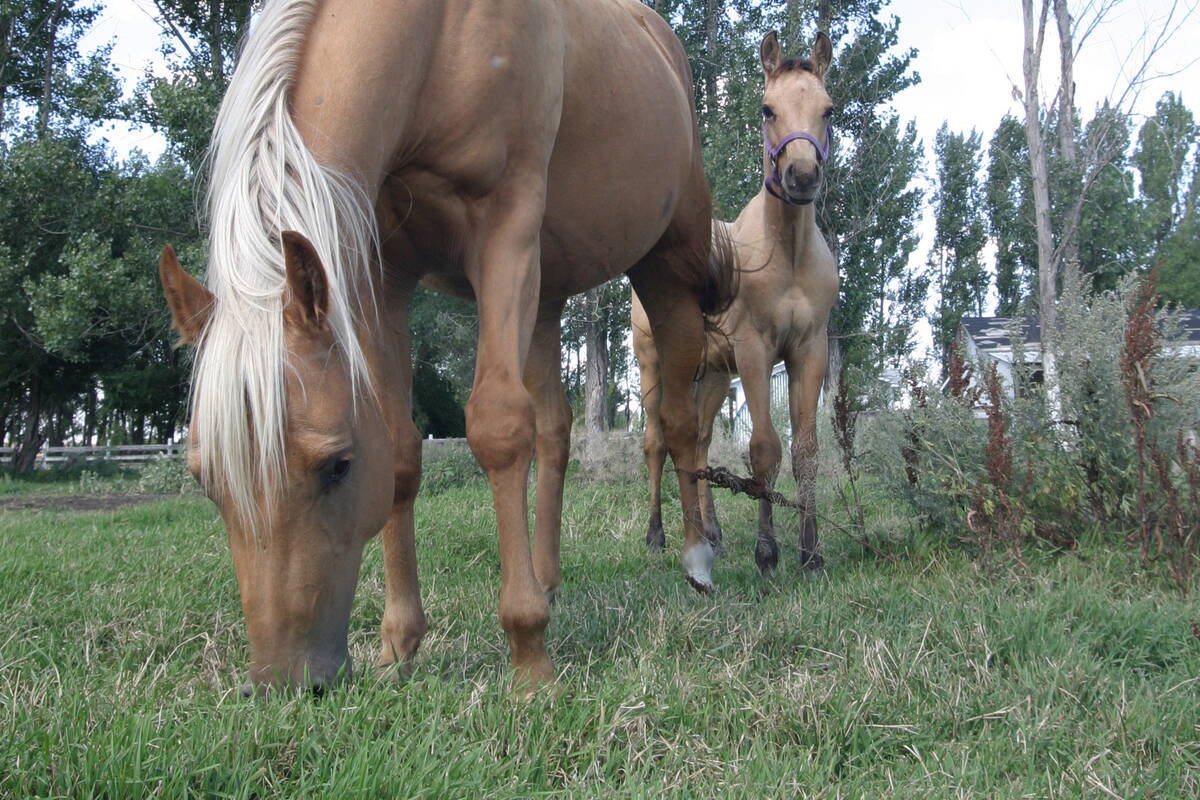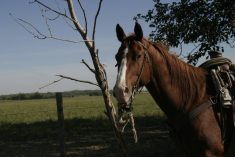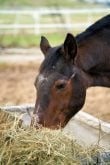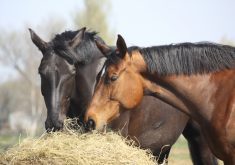Cinema portrays wild horses to be ‘running free,’ but the truth is that they spend hours and hours a day ‘walking free’ — moving slow and steady as they graze, browse and forage.
Step, bite, chew, repeat. Horses were designed to move and it keeps them physically healthy and mentally content.
The No. 1 function of its body is movement. In fact, every body system, whether respiratory, digestive, neurological or reproductive, is in greatest health when the body has abundant movement.
Read Also

Ignoring growth plates sabotages young horse development
Young horse training plans and workloads must match their skeletal development. Failing to plan around growth plates can create lifelong physical problems.
Somehow, though, the value of slow steady movement of day-to-day activity in current society has been seconded to forced, regimented exercise. However, the difference between exercise and movement varies greatly to overall health and well-being.
Exercise generally implies a structured regime of repetitive activities with a training focus, like going to the gym for the human and longeing for the horse (versus gardening or walking the dog for the former and grazing for the latter).
Due to the nature of a fibrous diet, grazing must include a great many footfalls and chewing cycles to ingest a sufficient volume. Ironically, research has found horses do not require daily regimented exercise to remain fit — but they do require an environment that provides lots of opportunities for movement.
The field of exercise was born to counter the harmful effects of a sedentary life. As such, many a human has come to prioritize exercise over movement due to a fast paced, time-limited lifestyle.
This philosophy has broadly spilled into the equine world, where many horses also live a sedentary existence with brief bouts of intense exercise.
As a result, many owners focus on their horse’s exercise program while overlooking the value of general movement to its biology. While convenient, this frequently results in monotonous and repetitive activity. This becomes a biological tax to such an extent that it dramatically diminishes quality and length of life and leads to an array of health issues.
Modern day horses are suffering from many of the same health problems as modern day humans and pets.
As a horse’s opportunity for full expression of movement is constrained, all body systems are affected to varying degrees. Obesity is the most obvious outcome, but so are metabolic followers such as insulin resistance, equine metabolic syndrome and laminitis.
Other consequences include poor hoof quality, skin conditions, digestive disorders (such as ulcerations, colic and impaction), natural behaviour losses, loss of muscle tone and weak top lines, reproductive failures, stereotypical behaviour developments and a general decline of fitness and well-being.
What were once thought to be age-related conditions, such as degenerative arthritis, Cushings disease and immune weakness, are now found in horses at younger ages.
Exercise programs generally target the larger musculoskeletal groups but the highly refined connective and neurological tissues fundamental to respiration, fluid circulation (blood and lymph), digestion and reproductive systems, and hoof and dental health are highly invested in the outcomes of daily movement to remain healthy.
In addition, the immunological duties of the lymphatic system are intricately connected to daily movement.
Movement is so crucial to the horse’s biology that when insufficient, it leads to problematic behaviours — cribbing, weaving, pacing and stall walking — as the animal attempts to satisfy the requirement for moving even when prevented.
In 2020, Dr. Robert Bowker of Michigan State University published the first account measuring the 24-hour step activity of domestic horses on two- to five-acre pastures and in stalls.
The pastured horses took seven or eight times more steps (about 11,000) and travelled an average of 16 kilometres in 24 hours, while the stalled counter group took about 1,400 steps within the same time.
As health costs rise for owners, the pressures on horse-keeping practises will evolve to embody ‘home ranges’ out of necessity to improve equine movement and thus equine health and welfare.
















